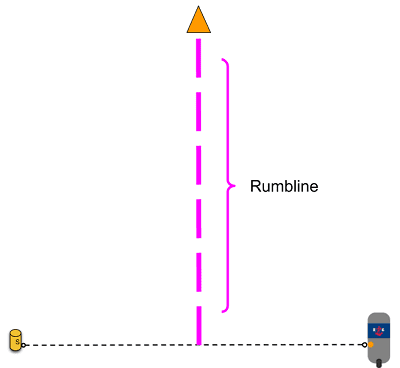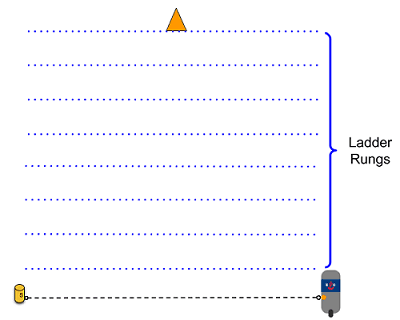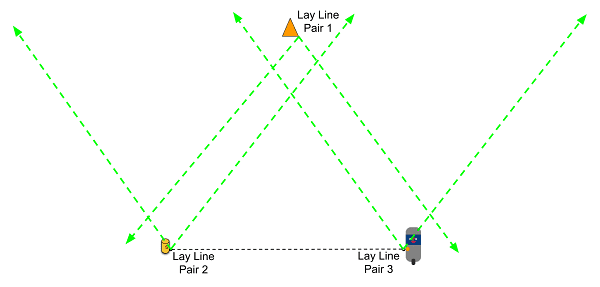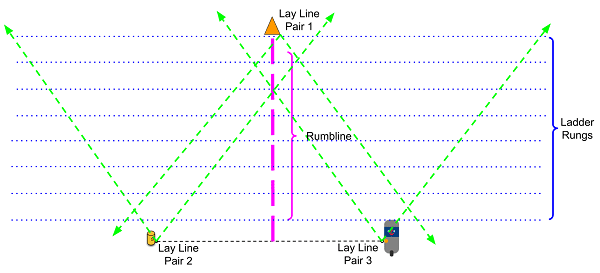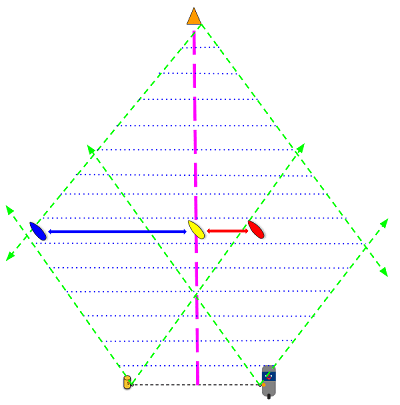Hello, my name is Rocky the Rule-Following Fish! Although I live under the water, I love knowing everything about rules for boats on top of the water. My glasses help me see a lot from down here.
Every month I will share new information about how to act when boats meet. The rules on the water are a little different from the rules on land. Being a friendly boater and fair competitor while on the water is easy when you take a little time to read up on the rules.
Sign up for The Rather Be Sailing Report to stay up to date with the rules and other activities!
Understanding Leverage on the Racecourse
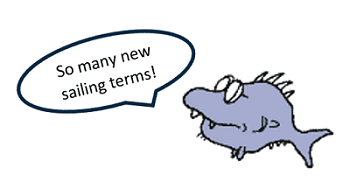
- RHUMBLINE
- LADDER RUNGS
- LAYLINES
RHUMBLINE is the shortest distance you can sail between two check points of a racecourse. A racecourse can have many pre-set check points, creating many legs or even laps to complete!
For example, the first RHUMBLINE you will see on the racecourse is from the starting line to the first rounding mark. This RHUMBLINE is drawn perpendicular from the middle of the starting line, straight up to the windward mark. That is shortest distance between those two check points.
LADDER RUNGS are imaginary horizontal lines across the racecourse between two check points. Each LADDER RUNG is 1 boat-length tall.
For example, there are 8 LADDER RUNGS drawn parallel the starting line, up to the windward mark. Climbing up 1 LADDER RUNG of the course means you are 1 boat length closer to the check point!
LAY LINES are a pair of imaginary diagonally lines connected to each check point. The angle of a lay line can change between types of boats and different wind conditions. I like to use an average angle of 90 degrees for my LAYLINES.
For example, there are three pairs of LAYLINES on the racecourse between the starting line and the first windward mark: 1 from the windward mark; 2 from the starting pin; and 3 from the race committee!
This RACECOURSE MAP shows the RHUMBLINE, LADDER RUNGS, and LAY LINES all together! This can be used to help calculate how much or how little LEVERAGE you have!
LEVERAGE is the distance between your boat and another boat on the racecourse. The RACECOURSE MAP can show you how many boat lengths of LEVERAGE another boat gains by sailing to the opposite side of the course.
You are the yellow boat close to RHUMBLINE in the middle of the racecourse.
The blue boat has the MOST LEVERAGE to the left side of you.
The red boat has the LEAST LEVERAGE to the right side of you.
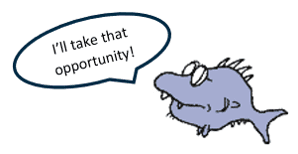
- You must first understand RHUMBLINE, LADDER RUNGS, and LAYLINES before understanding LEVERAGE.
- Having more or less LEVERAGE between your boat and another boat means more or less OPPORTUNITY to pass that boat before the next check point!
Visit Youth Racing Central for more youth sailing resources!

